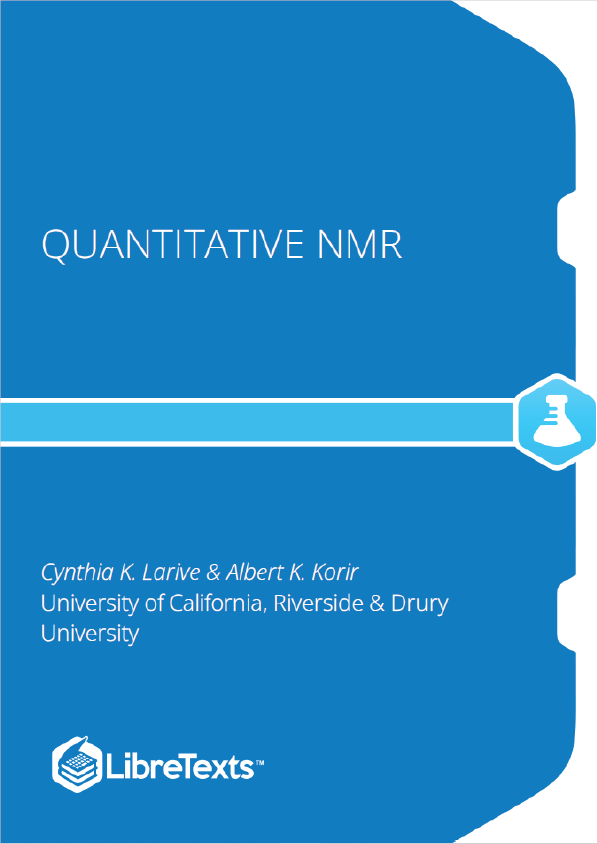1: Basic NMR Theory
This section presents a basic overview of the theory of modern NMR. Readers interested in more in-depth treatments of this subject are encouraged to utilize the resources listed in the reference page at the end of this section. The embedded animations in the web book http://www.cis.rit.edu/htbooks/nmr/ authored by Professor Hornak makes this site especially useful for students learning about NMR.
1.1: What is spin?
The fundamentals of NMR begin with the understanding that a nucleus belonging to an element with an odd atomic or mass number has a nuclear spin that can be observed. Examples of nuclei with spin include H, H, C, N, F, P and Si. All of these nuclei have a spin of ½. Other nuclei like H or N have a spin of 1. Nuclei with even atomic and mass numbers like C and O have spin of 0 and cannot be studied by NMR. The following introductory discussion of NMR is limited to spin ½ nuclei. Nuclei that possess spin have angular momentum, ρ. The maximum number of values of angular momentum a nucleus can have is described by the magnetic quantum number, Ι. The possible spin states can vary from +Ι to –Ι in integer values. Therefore, there are 2Ι +1 possible values of ρ.
1.2: How does absorption of energy generate an NMR spectrum?
In the absence of an external magnetic field the two spins in the previous figure would be randomly oriented and their energies degenerate, in other words they would have identical energies. However in the presence of an applied magnetic field, the energies of the two spin states diverge and the spins orient themselves with respect to the applied field. The larger the magnetic field, the greater the difference in energy between the spin states. For most spin ½ nuclei, the + ½ (α) spin state is of lower energy and corresponds to having the spin aligned with the applied field while the – ½ (β) spin state can be thought of as having the spin opposed to the applied field.
The difference in energy between the states, ΔE, depends on the strength of the applied magnetic field, B , according to Eq. . In this equation γ is the gyromagnetic ratio, a fundamental property of each type of nucleus and h is Plank’s constant. Table 1 shows values of the gyromagnetic ratio for several common NMR nuclei.
The signal in NMR is produced by absorption of electromagnetic radiation of the appropriate frequency. Energy absorption causes the nuclei to undergo transitions from the lower energy (α) to the higher energy (β) spin states. If we think about the spins as bar magnets, absorption of energy at the right frequency causes the spins to flip with respect to the applied field. As is the case with other spectroscopic methods, the difference in population of these two quantized states can be expressed by the Boltzmann equation, Eq. where k is Boltzmann’s constant, 1.38066 x 10 J·K , and T is the temperature in degrees Kelvin.











